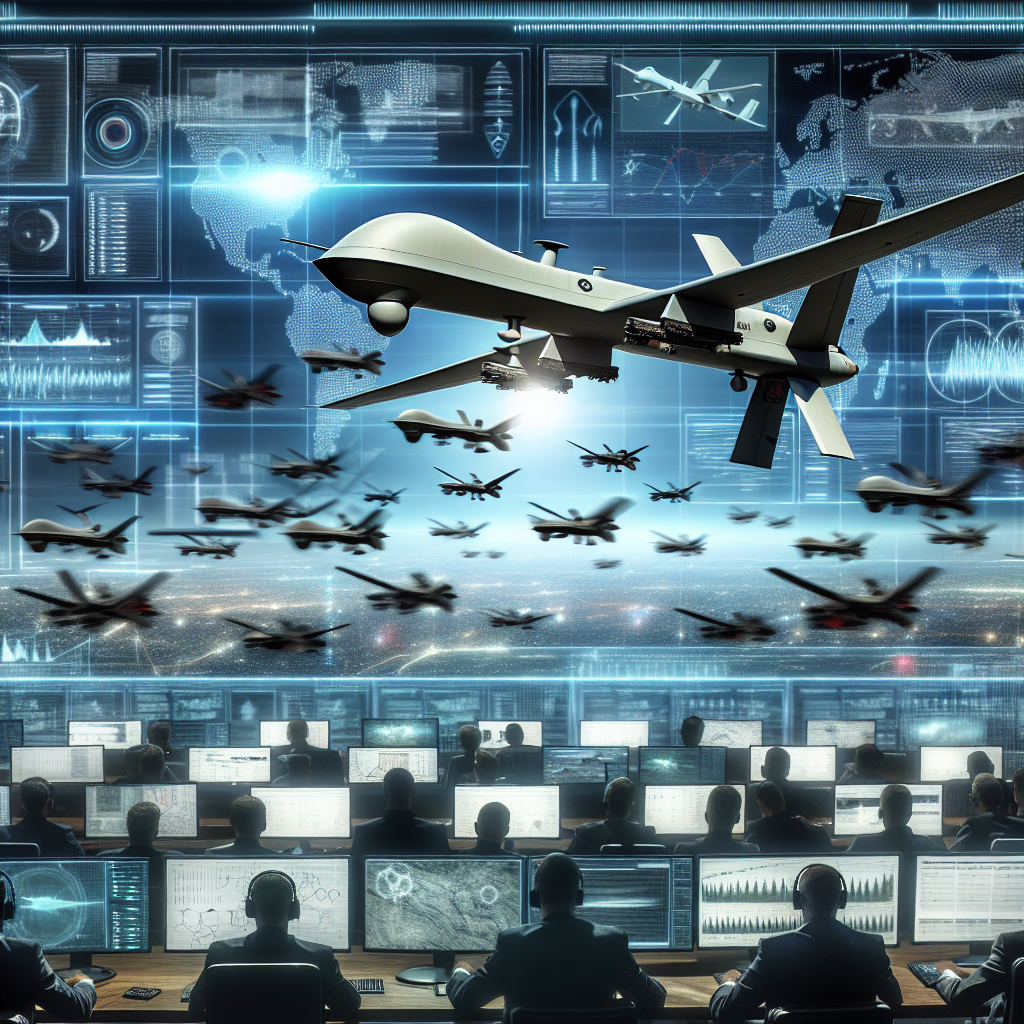Title: Russia’s Massive Drone Assault on Ukraine: Unveiling the Tensions
The Escalating Drone Warfare Between Russia and Ukraine
Russia has intensified its conflict with Ukraine, orchestrating a widespread drone attack targeting multiple regions. The event, marked by the deployment of nearly 150 drones, encapsulates the unyielding tensions characterizing the Russia-Ukraine war. This escalation comes amid broader uncertainties surrounding peace prospects, as former U.S. President Donald Trump recently cast doubt on Russian President Vladimir Putin's willingness to end the conflict.
The sheer scale of this recent assault not only underscores Russia's military aggression but also highlights its strategic reliance on drone warfare. These unmanned aerial vehicles serve as pivotal instruments in the modern battlefield, effectively disrupting civilian infrastructure and military operations alike. In this article, we’ll examine the layers of this evolving conflict, explore the implications of such attacks, and evaluate the geopolitical narratives drawing global attention.
Understanding the Latest Drone Offensive
1. Tactical Use of Drones in Modern Warfare
Russia’s remarkable reliance on drones is reshaping conflict dynamics. The latest assault saw these drones targeting key infrastructural points across Ukraine, leaving destruction, chaos, and fear in their wake. Designed for both surveillance and offensive capabilities, drones are proving to be formidable tools in Russia's military arsenal.
Such strategies align with a broader military doctrine emphasizing economic strain on adversaries. In Ukraine's case, consistent strikes on power grids, transportation lines, and communication hubs align with Russia’s attempts to paralyze not just military resilience but the socio-economic stability of the nation as well.
Related article: The Role of Emerging Technologies in Ukraine's Defense Strategies
2. Global Response and U.S. Insights
The international community faces an ethical dilemma. Strong rhetoric from Western nations condemns the violence, but words have yet to effectively mitigate the crisis. U.S. leaders, including figures like Donald Trump, have brought nuances to global discourse by questioning the undercurrents influencing Putin's actions. Trump’s public remarks shed light on global skepticism, particularly regarding Putin’s genuine intentions towards diplomacy or peace-making, as previously rumored peace talks hold little weight against these large-scale offensives.
What does this mean for global governance frameworks? Does the precedent of widespread disregard for diplomatic agreements portend larger repercussions for international norms?
3. Ukraine’s Resilience in the Face of Threats
Ukraine’s response to these drone assaults has been steadfast. Leveraging advanced air defense systems provided by NATO allies, Ukraine aims to neutralize the tactical advantages these drones might offer Russia. However, the challenges of securing expansive territory spread between urban and rural landscapes remain daunting.
Reports from Ukrainian leadership illustrate both bravery and burden. “We will not buckle under pressure,” emphasizes one senior official. As missile fragments scatter across neighborhoods, Ukraine’s resilience becomes symbolically crucial—not just regionally but as inspiration for sovereignty on a global stage.
Related article: Ukraine’s Air Defense Strategies: Key Challenges
Broader Impacts on Global Geopolitics
The strategic assault goes beyond mere numbers; it alters geopolitical balances. By prompting an arms race and policy shifts within NATO, Europe finds itself grappling with the broader consequences. Could this strain existing alliances? Or does it fortify political ideals against authoritarian aggression?
This intensified conflict also affects global energy security; key Eastern European pipelines are frequently threatened due to proximity. Nations dependent on oil transit routes may see cascading economic slowdowns.
For further international contexts: According to a report by Reuters, the ripple effects include heightened sanctions discussions and more secure border measures adopted by neighboring countries.
The Human Cost and Long-Lasting Ramifications
While numbers—like “150 drones” or “targeted regions”—often reduce warfare to strategic elements, the overwhelming reality lies in the human toll. Families uprooted, children displaced, and communities destroyed remain stark reminders of war’s brutality. Moreover, psychological scars blur the prospects for reconciliation even after the conflict ceases.
These struggles question whether geopolitical interventions have adequately prioritized humanitarian consequences. What steps should policymakers implement to alleviate trauma even amidst active military environments?
Conclusion
The latest drone assault in Ukraine portrays a harrowing continuation of an already protracted war, rendering hopes for peace precarious. While Russia displays technological precision, Ukraine encapsulates human defiance, embodying a struggle for sovereignty, dignity, and survival.
As the international community grapples with how best to respond, the truth is undeniable: contemporary geopolitical landscapes demand nuanced solutions that blend security measures with empathetic diplomacy. Only time will tell whether these efforts will bridge divisions or further entrench them.
Want to delve deeper into this evolving crisis? Follow our latest geopolitical coverage.
Q&A Section
1. Why is drone warfare significant in the Russia-Ukraine conflict?
Drone warfare minimizes direct human involvement, making it strategically valuable for infrastructure sabotage without risking soldiers. For resource-strained regions like Ukraine, countering sustained strikes poses logistical hindrances.
2. What has been Ukraine’s response to Russia’s drone attacks?
Ukraine relies on NATO-provided systems, bolstered strategic overlays, and public solidarity. Air-defense advancements remain key, coupled with international appeals for heavier sanctions against Russia.
3. How does the war influence global energy markets?
Pipeline vulnerabilities combined with regional trade instability provoke volatility in oil prices globally. Nations heavily reliant on Eastern European transit routes experience amplified disruptions.
4. How does civilian life adapt during persistent military strikes?
Civilians endure altered routines—night shelters, emergency drills for children, and reliance on community aid. Anxiety lingers perpetually due to proximity uncertainty regarding future attacks.
5. Are peace negotiations viable amidst escalating drone offensives?
Viable only under mutual consensus and international mediation. However, entrenched distrust and violent gestures from combatants severely deter immediate negotiations.
Tags
#RussiaUkraineWar #DroneWarfare #Geopolitics #UkraineNews #GlobalSecurity
[Final Note]: By blending critical insight and global responsibility, one takes productive strides toward bridging understanding
